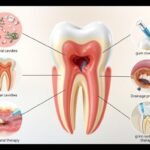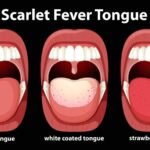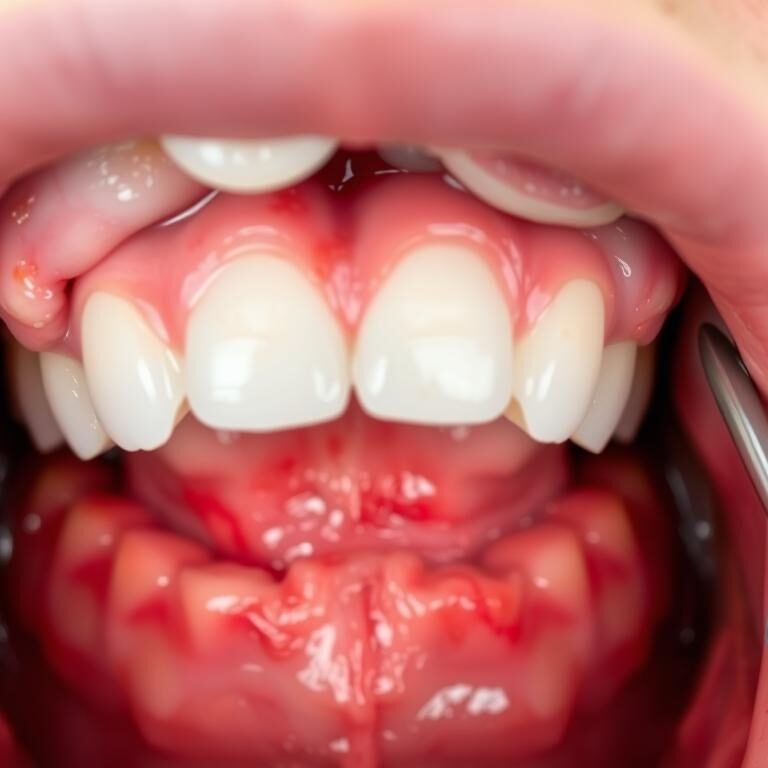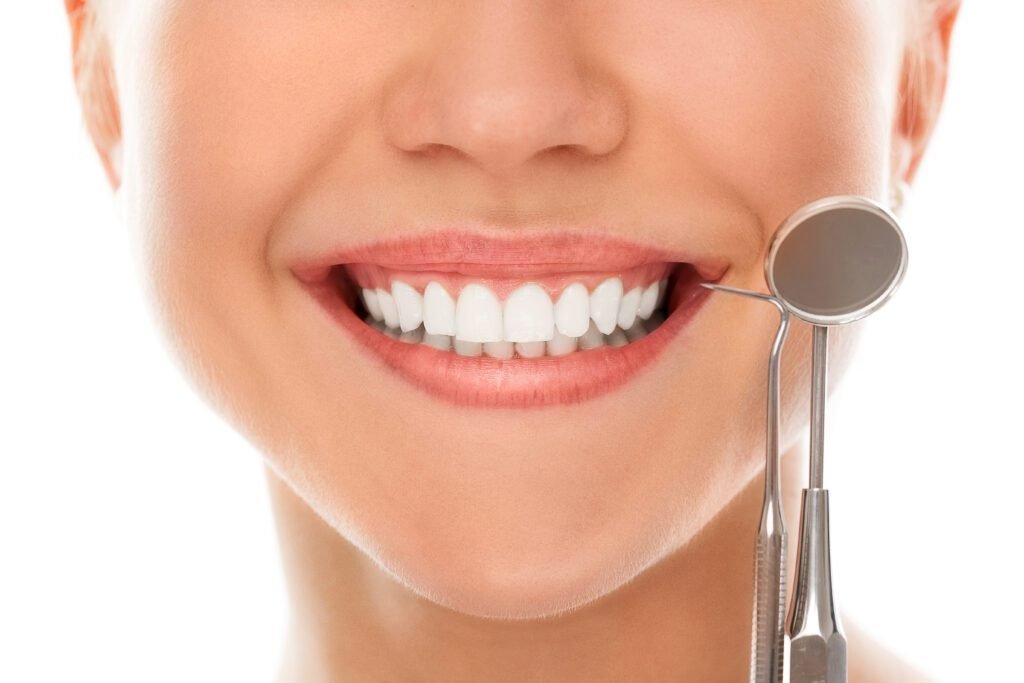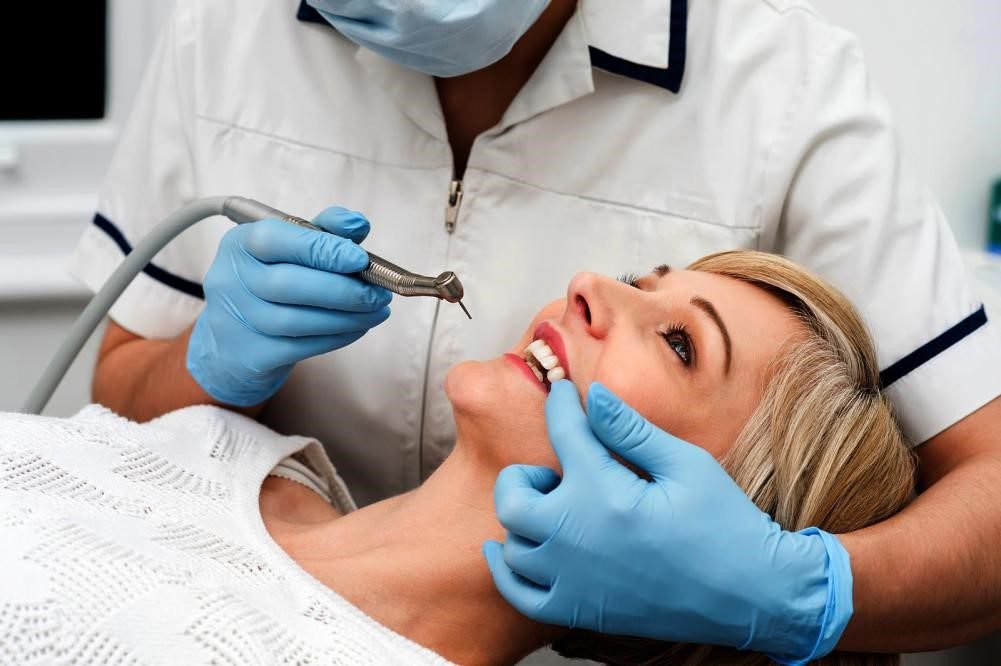Spotting bumps on your tongue can be a shock. It’s a moment many of us dread. These bumps can cause discomfort and worry, affecting our daily lives.
Our tongues are key for speaking and eating. If you have painful bumps, know you’re not alone. About 50% of people get transient lingual papillitis, or lie bumps, at some point.
Understanding these bumps is crucial for your health. Many times, they go away quickly, like canker sores. But, it’s important to keep your tongue healthy. Changes can mean bigger health issues.
We’ll explore why these bumps happen and how to take care of your tongue. For more on tongue health, check out this informative resource.
Table of Contents
Understanding the Tongue and Its Structure
The tongue is a vital organ made of muscles, nerves, and blood. It’s complex and plays key roles in taste, food processing, and speech.
Normal bumps on the tongue are called papillae. They come in different types, each with its own job. For example, fungiform papillae have taste buds and are found on the tongue’s top surface.
The tongue has six main parts: the root, body, apex, dorsum, inferior surface, and lingual frenulum. Each part helps with food movement and speech. Vallate papillae, near the tongue’s end, also have taste buds.
Filiform papillae are long and many, giving us touch through their nerves. They line up in V-shapes. Foliate papillae are less developed in humans, showing they don’t play a big role.
Knowing about the tongue’s structure helps us understand bumps or lesions. These can affect taste, swallowing, or speech. Some people struggle with speech, affecting a small part of the population.
| Type of Papillae | Location | Function |
|---|---|---|
| Fungiform Papillae | Dorsum of the tongue | Taste sensation |
| Vallate Papillae | In front of the terminal sulcus | Taste sensation |
| Foliate Papillae | Lateral aspects of the tongue | Limited sensory function |
| Filiform Papillae | Covers most of the tongue’s surface | Touch sensation |
What Are Bumps on the Tongue?
Bumps on the tongue can come from many sources. They can be harmless or serious. These bumps can be different in size, color, and texture. It’s hard to tell if they are normal or need a doctor’s check.
There are several types of bumps on the tongue. They can look different and cause different symptoms. Here are some common ones:
- Transient Lingual Papillitis: Also known as lie bumps, these are small white or red bumps. They usually happen because of irritation.
- Canker Sores: These are painful red spots inside the mouth. They usually heal in about ten days.
- Leukoplakia: This is when you see white patches in your mouth. It’s often linked to tobacco use and can be serious.
- Fungiform Papillae: These bumps make the tongue’s surface rough. They usually match the tongue’s color.
- Geographic Tongue: This looks like a map on your tongue. It’s not harmful but can be uncomfortable.
If you notice bumps on your tongue that are new or hurt, see a doctor. Not all bumps are serious. Knowing what causes them helps keep your tongue healthy.
| Type of Bump | Description | Potential Causes |
|---|---|---|
| Transient Lingual Papillitis | Small white or red bumps | Irritation, stress |
| Canker Sores | Painful red lesions | Stress, immune response |
| Leukoplakia | White patches in mouth | Tobacco use, irritation |
| Geographic Tongue | Map-like patterns on tongue | Unknown triggers |
| Fungiform Papillae | Color-matching bumps | Normal anatomical feature |
Common Causes of Bumps on Tongue
Bumps on the tongue can come from many things. They often show up as common tongue bumps that point to health problems. Knowing what causes these bumps helps find the best way to treat them. Things that can cause these irritations include:
- Irritation: Biting the tongue, eating hot or spicy foods can make the taste buds inflamed. This leads to red bumps on the tongue.
- Allergies: Some foods can cause allergic reactions. This can lead to temporary bumps that need to be avoided.
- Infections: Canker sores, affecting up to 20% of adults, cause painful bumps in the mouth.
- Medical Conditions: Oral thrush, common in those with weakened immune systems, shows up as bumps on the tongue.
- Sexually Transmitted Infections: Syphilis, with its increasing reports, can cause chancres and other symptoms.
Knowing the causes helps figure out what kind of bumps you have and how to treat them. If you keep getting red bumps on your tongue, it’s important to see a doctor. They can check for serious conditions.

| Condition | Typical Symptoms | Prevalence |
|---|---|---|
| Canker Sores | Painful ulcers | Up to 20% of adults |
| Oral Thrush | White patches, bumps | 8% to 10% of the population |
| Syphilis | Chancres on the tongue | Increasing reports |
| Transient Lingual Papillitis | Painful bumps | Common, prevalence not defined |
| Geographic Tongue | Map-like patterns | 1% to 3% of the population |
In summary, knowing why tongue bumps happen helps people understand their oral health. It also shows why seeing dental and medical experts is important.
Transient Lingual Papillitis (Lie Bumps)
Transient lingual papillitis, also known as lie bumps, shows up as small red or white bumps on the tongue. It mainly hits young women, with over 50% of people getting it at some point. These bumps usually pop up for a few hours to 1–2 days.
Lie bumps often go away on their own, but they can come back weeks to years later. They cause pain or irritation, but no other symptoms. If you have bumps for more than a week, a lot of pain, or bleeding, see a doctor.
Many things can make these bumps worse. Stress, bad oral hygiene, and food allergies can trigger them. Eating too much acidic or sugary food also plays a role. Even biting your tongue can make them worse.
Eruptive lingual papillitis is different and lasts longer, often in kids. It can take 2 to 15 days to heal. Knowing about transient lingual papillitis helps with taking care of yourself and talking to doctors.
Canker Sores: Identification and Treatment
Canker sores are painful ulcers that often appear in the mouth, often on the tongue. They look like small, round spots with a white or yellow center and a red edge. People may get canker sores three to six times a year, making everyday life tough.
Most canker sores on the tongue are less than 10 millimeters in size. But about 10% can grow bigger, which might leave scars. Usually, they heal on their own in 7 to 10 days. But bigger sores can take up to six weeks to heal.
- Emotional stress
- Certain foods, such as citrus fruits, cheese, and chocolate
- Nutritional deficiencies, like vitamin B-12, zinc, folate, or iron
- Mouth injuries or trauma
Managing canker sores involves pain relief and changing your diet. Over-the-counter mouthwashes might not stop sores but can ease pain. Studies show that taking 3–5 grams of arginine or 3–4 grams of vitamin C daily might help heal them, but the exact amount is still unknown.
For severe cases, doctors might prescribe:
| Treatment Type | Description |
|---|---|
| Topical Corticosteroids | Used to reduce inflammation and pain. |
| Antiseptic Mouthwashes | May help relieve pain but not prevent sores. |
| Tetracycline Antibiotics | Prescribed in mouthwash form for severe cases. |
| Immunosuppressants | Rarely used for extreme cases. |
If you have symptoms like eye pain, fever, or unexplained tiredness, see a doctor. These could be signs of a bigger health problem. Canker sores can make eating and sleeping hard, so knowing what causes them and how to treat them is key.
Squamous Cell Papilloma and Its Characteristics
Squamous cell papilloma is a benign tumor found on the tongue. It’s caused by the human papillomavirus (HPV), mainly strains 6 and 11. This leads to painless bumps on the tongue’s surface. About 1 in every 250 people get oral squamous papillomas, mostly between 30 and 50 years old.
These tongue growths look like cauliflower and are usually harmless. But, they need watching for any changes. In kids, they make up about 8% of oral tumors. They are small, like one case was 0.9 cm × 0.5 cm × 0.2 cm. Rarely, they come back within 15 months after treatment.
Doctors might remove them surgically or use a laser. Most don’t turn cancerous. But, those over 10 mm or on the gums are at risk. It’s smart to check back every three months for 18 months after treatment.
Smoking might also play a part, but the link isn’t clear. Staying on top of oral health and taking preventive steps can help. For more on oral health, check out how to spot signs and protect yourself against oral cancer.
Effects of Stress and Hormones on Tongue Health
Stress and hormonal changes can really affect tongue health. They can make conditions like transient lingual papillitis worse. Stress effects on the body include a weaker immune system. This makes it harder for the body to fight off irritation and inflammation.
Hormonal shifts, like those during puberty, menstruation, pregnancy, and menopause, can change the mouth’s environment. For example, more blood flow during puberty can cause swollen or bleeding gums. This can indirectly harm tongue health. Women often face these changes, leading to issues like pregnancy gingivitis that can cause tongue discomfort.
Stress can make physical reactions in the mouth worse. Conditions like canker sores often show up during stressful times. Hormonal changes can also cause symptoms like dry mouth. This can change the tongue’s texture and increase the risk of infections.
Keeping up with oral health is key to dealing with stress and hormonal changes. Regular dental visits and tongue scraping can help reduce irritation. It’s important to understand these effects, mainly for those dealing with persistent tongue bumps due to stress or hormones.
Oral Herpes: Symptoms and Management
Oral herpes is usually caused by the herpes simplex virus type 1 (HSV-1). It shows up as painful blisters on the tongue and in the mouth. These cold sores can ooze fluid, causing pain, and take weeks to heal. It’s important to know the symptoms and how to manage oral herpes.

About 67% of people under 50 worldwide have HSV-1. This virus spreads mainly through skin-to-skin contact, more so during outbreaks. Symptoms start with red, swollen areas in the mouth, which can turn into sensitive blisters on the tongue.
- Antiviral medications such as valacyclovir, famciclovir, and acyclovir.
- Topical treatments to alleviate discomfort.
- Maintaining proper oral hygiene to reduce the risk of additional complications.
Most oral herpes cases get better on their own in 2 to 4 weeks. Starting treatment early can make outbreaks less severe and shorter. If you have outbreaks more than nine times a year, see a doctor.
Preventing oral herpes is key. Don’t share utensils, lip products, or have intimate contact during outbreaks. Knowing the importance of oral hygiene and taking steps can help manage this common condition better.
Scarlet Fever and Its Impact on the Tongue
Scarlet fever is a bacterial infection that mainly hits kids aged 5 to 15. It often comes after a strep throat infection. Symptoms include a high fever, sore throat, and swollen neck glands.
A rash shows up 12 to 48 hours later, starting on the chest and tummy. It spreads and has small, raised bumps, making the skin feel like sandpaper.
A key sign of scarlet fever is strawberry tongue. It looks vibrant red and bumpy, sometimes with a white coating at first. A doctor can quickly spot this by looking at the tongue and rash.
Antibiotics can cure scarlet fever in about a week. Without them, it can spread for 2 to 3 weeks. It’s contagious until 24 hours after starting antibiotics.
Scarlet fever can lead to serious problems like pneumonia, meningitis, and rheumatic fever. These are rare but serious.
Scarlet fever cases have gone up lately. Parents should watch for symptoms. Keeping kids home for 24 hours after starting antibiotics stops it from spreading.
Knowing about red bumps on the tongue and strawberry tongue helps catch it early. This leads to better treatment.
Recognizing Glossitis and Its Causes
Glossitis is an inflammation of the tongue that makes it smooth. This happens when the natural papillae are lost. It can cause discomfort and affect taste due to fewer taste buds. Knowing why an inflamed tongue appears is key.
Acute glossitis can start suddenly, often due to allergies. People with allergies should watch out, as it affects 50 million in the U.S. each year. Chronic glossitis keeps coming back and might show health problems, common in those with chronic diseases.
Atrophic glossitis is linked to not getting enough nutrients. Iron-deficiency anemia affects 1 in 5 women and 1 in 20 men. Lack of B vitamins can cause different types of glossitis, like magenta glossitis from Vitamin B2 and “beefy” glossitis from Vitamin B12.
Infections can also cause glossitis. For example, Candida infections lead to median rhomboid glossitis, and herpes simplex virus causes geometric glossitis. But, how common these infections are in glossitis cases is still being studied.
Poor hydration and conditions like Crohn’s disease can also contribute. People with dental appliances, like braces, are at higher risk, mainly in their teens.
Symptoms of glossitis include pain, swelling, and color changes in the tongue. Seeing a doctor right away is important if swelling blocks airways. This is a serious, possibly life-threatening issue. Knowing about glossitis helps in getting the right treatment.
Good oral hygiene is also important for tongue health. Learn more about dental care and preventing cavities to keep your tongue healthy.
Bumps on the Tongue: When To See a Doctor
Bumps on the tongue can cause discomfort or worry. If you have persistent tongue bumps that don’t go away after a week, see a doctor. Changes in size, color, or texture mean you should get medical help. Symptoms like pain, bleeding, or fever need quick attention.
When looking at tongue bumps, consider these factors:
- How long symptoms last
- Presence of pain or swelling
- History of oral health problems
- Recent infections or illnesses
Many tongue bumps are harmless and go away on their own. Conditions like transient lingual papillitis or canker sores often do. But, if bumps don’t go away, they could be a sign of something serious like oral cancer or infections. Regular dental visits and good oral care help catch problems early.
| Symptom | Action |
|---|---|
| Persistent bumps for over a week | Seek medical advice |
| Pain or discomfort | Consult a healthcare provider |
| Bumps accompanied by fever | Seek immediate medical consultation |
| Change in size or color | Schedule a medical consultation |
Knowing when to see a doctor for tongue bumps is key to keeping your health safe. It helps avoid serious problems.
Potential Risks of Mouth Cancer
Mouth cancer is a serious health issue. Some bumps on the tongue could be signs of it. Most bumps are not cancer, but some can be. Knowing the risks and symptoms is key to catching it early.
People who use tobacco are at higher risk. This includes smoking, cigars, and chewing tobacco. Drinking a lot of alcohol also increases the risk. About 66% of throat cancers are linked to the Human Papillomavirus (HPV).
- Irregular bumps on the tongue or inside the mouth
- Persistent sores that do not heal
- Changes in color or texture of the tongue
- Difficulties in swallowing or chewing
Eating too few fruits and veggies can also raise the risk. A diet lacking in nutrients can weaken the body’s fight against cancer. People over 55 are often diagnosed, but younger folks with HPV or bad habits can also get it.
The cancer staging system helps doctors plan treatment. Surgery is usually the first step. Radiation or chemotherapy might follow if the cancer has spread. Immunotherapy is a new option for advanced cases.
Knowing about mouth cancer risks can help catch it early. For more info, check this resource on lip cancer and related.
Identifying Lymphoepithelial Cysts
Lymphoepithelial cysts are noncancerous growths that appear as painless tongue bumps. They can be found under the tongue or on the floor of the mouth. These cysts vary in color, from flesh-colored to white or yellow cysts.
They are most common in people aged 10 to 30. These cysts are often linked to health issues, including HIV infections.

Doctors usually diagnose them by looking at them. Sometimes, they might need more tests. Most of the time, these cysts are harmless and can be managed.
If the bumps don’t go away or get worse, it’s important to see a doctor. Surgery might be needed if they cause pain or problems. But, it’s rare for these cysts to lead to serious issues.
It’s important to watch for swelling or problems with nearby areas. Regular dental visits can help catch these cysts early. This is good for your overall mouth health.
The outlook for these cysts is usually good. Getting help early is key if you need it.
| Characteristic | Description |
|---|---|
| Growth Rate | Slow-growing |
| Nature | Noncancerous |
| Common Age Range | 10 to 30 years |
| Appearance | Flesh-colored, white, or yellow |
| Associated Conditions | Often linked to HIV infections |
| Treatment Options | Surgical removal if necessary |
Irritation Fibromas: Symptoms and Treatment Options
Irritation fibromas are benign growths found in the mouth, often on the tongue. They appear due to long-term irritation, like biting the tongue or ill-fitting dental items. Though usually painless, they can cause discomfort.
These growths can be small or large, affecting daily tasks like eating and talking. They commonly appear on the gums, cheeks, tongue, or mouth’s inner lining. If they cause issues, surgery might be needed. For small ones that don’t hurt, watching them is often the best course. Seeing a dentist for a check-up is key, like during wisdom teeth evaluations.
It’s important to follow up after treating irritation fibromas to catch any new growths early. Keeping the mouth clean is a big part of preventing them. Knowing about irritation fibromas helps people make better choices for their mouth health.
| Characteristics | Details |
|---|---|
| Common Location | Tongue, gums, cheeks, inner lining of the mouth |
| Size | Small polyps to larger lesions |
| Treatment Options | Observation or surgical removal for symptomatic cases |
| Recurrence | Regular follow-up recommended |
| Preventive Measure | Education on oral hygiene |
Other Infections Causing Bumps on Tongue
Many infections on the tongue can cause bumps. Oral thrush, a yeast infection, is common. It shows as white patches or sores that hurt and itch. To feel better, you need antifungal treatment.
Canker sores are another issue. They usually go away in a week and can’t be spread. Eruptive lingual papillitis, mainly in kids, can cause fever and swollen lymph nodes. It might spread and often gets better by itself.
Syphilis starts with painless sores and can get worse if not treated. Oral herpes, from the herpes simplex virus, causes painful blisters that last for weeks. You need proper care to feel better. Knowing what infection you have is key to the right treatment.
Preventing these infections is important. Keeping your mouth clean, going to the dentist regularly, and knowing the signs can help. Mouthwash is also a big help, like in treating thrush. For more on mouthwash, check out this source.
| Infection Type | Symptoms | Treatment |
|---|---|---|
| Oral Thrush | White patches, soreness | Antifungal medications |
| Canker Sores | Small sores, pain | Usually none, resolves in 7-10 days |
| Eruptive Lingual Papillitis | Fever, swollen lymph nodes | Resolves on its own |
| Oral Herpes | Painful blisters | Antiviral medications |
| Syphilis | Painless sores | Antibiotics |
Home Remedies for Managing Tongue Bumps
Managing tongue bumps often starts at home with simple remedies. Saltwater rinses can soothe discomfort and help heal. They are great for common issues like canker sores, which affect about 1 in 5 people each year.
Honey is another effective remedy. It has antibacterial properties that can reduce inflammation. Its natural healing qualities help without the need for drugs.
Aloe vera is also a powerful natural treatment. It has anti-inflammatory properties that can ease pain and speed up healing. For those with minor tongue irritations, aloe vera gel can be very helpful.
While these remedies work for many, they might not be enough for everyone. If symptoms last or get worse, see a healthcare provider. About 15% of people with tongue bumps might have serious issues. It’s important to stay aware of symptoms and try natural treatments for the best tongue health.
FAQ
What causes bumps on the tongue?
Tongue bumps can come from many things. This includes irritation, allergies, infections, and health issues. Common causes are transient lingual papillitis, canker sores, and oral herpes.
Are all bumps on the tongue a cause for concern?
Not all tongue bumps are serious. Many, like transient lingual papillitis and irritation fibromas, are harmless and go away on their own. But, it’s important to watch any bumps that don’t go away or change. See a doctor if you’re worried.
What are white bumps on the tongue indicative of?
White bumps on the tongue can mean different things. They might be canker sores, thrush (a yeast infection), or transient lingual papillitis. It’s key to look at other symptoms to figure out what they are.
When should I see a doctor for bumps on my tongue?
See a doctor if tongue bumps last more than two weeks, grow or change, or hurt a lot. Also, if you have trouble swallowing or other symptoms that worry you.
What is the difference between transient lingual papillitis and canker sores?
Transient lingual papillitis shows up as small red or white bumps, often from irritation or stress. Canker sores are painful ulcers on the tongue, with a white or yellow center.
Can stress cause bumps on the tongue?
Yes, stress can make tongue bumps from transient lingual papillitis worse. It can also weaken your immune system, leading to more oral health problems.
What are the symptoms of oral herpes on the tongue?
Oral herpes shows up as painful blisters on the tongue and mouth. These blisters can ooze and take weeks to heal. You’ll need antiviral treatment to manage it.
How can I treat bumps on my tongue at home?
You can try warm saltwater rinses, honey, and aloe vera to ease discomfort and help heal. But, if symptoms don’t get better, see a doctor.
What does “strawberry tongue” mean?
“Strawberry tongue” is when your tongue looks bumpy and red, often from scarlet fever. You need to see a doctor right away to treat the infection.
Are lymphoepithelial cysts painful?
Lymphoepithelial cysts are usually painless and small glands under the tongue. They don’t usually need treatment unless they’re uncomfortable or don’t go away on their own.
What should I know about cancerous bumps on the tongue?
Some bumps can be cancer, like squamous cell carcinoma. It’s important to watch for changes in color or sores. Early detection is key.



